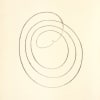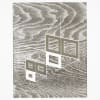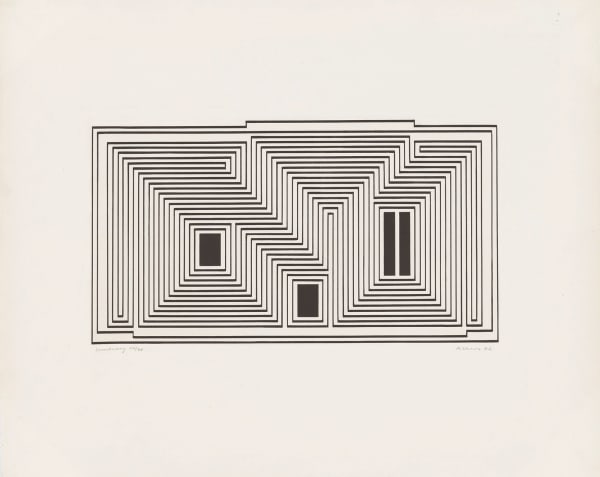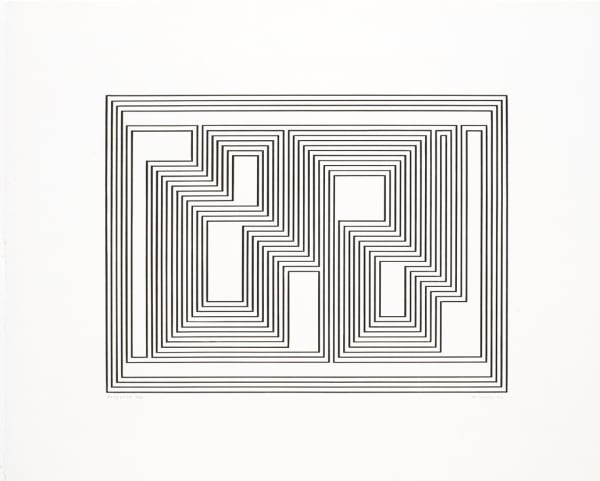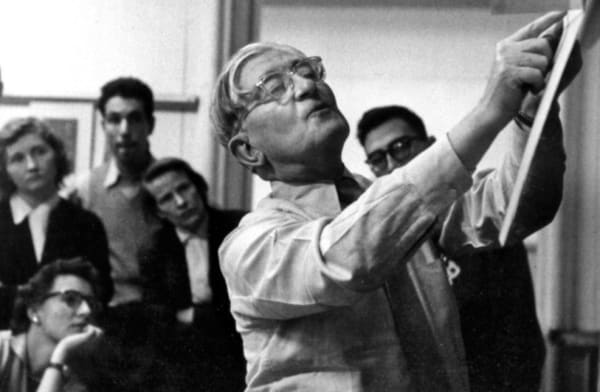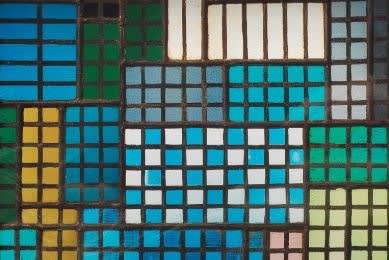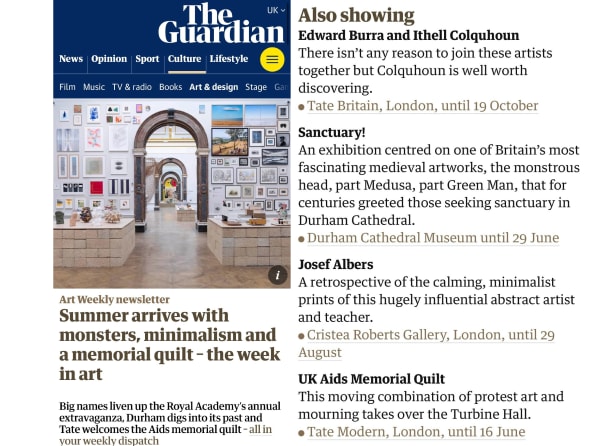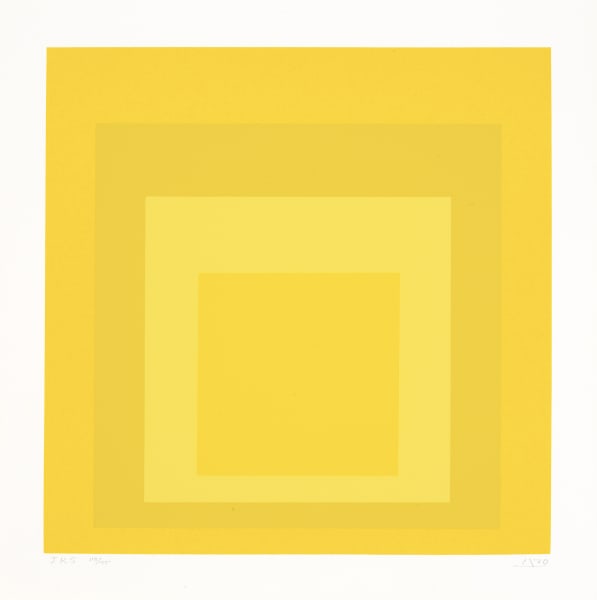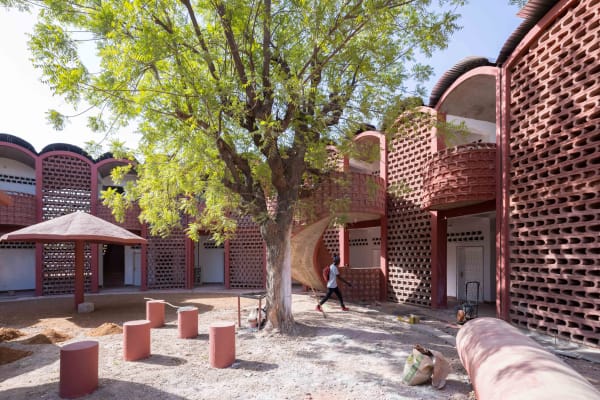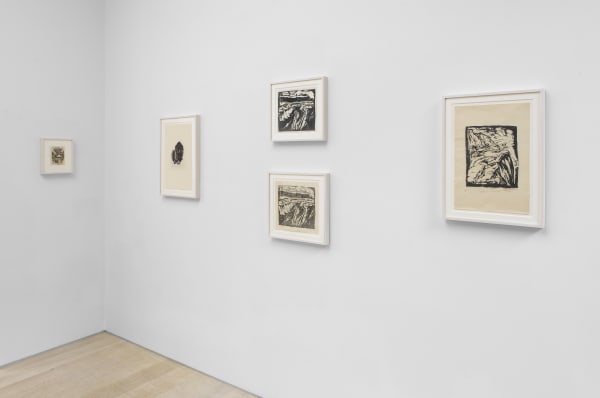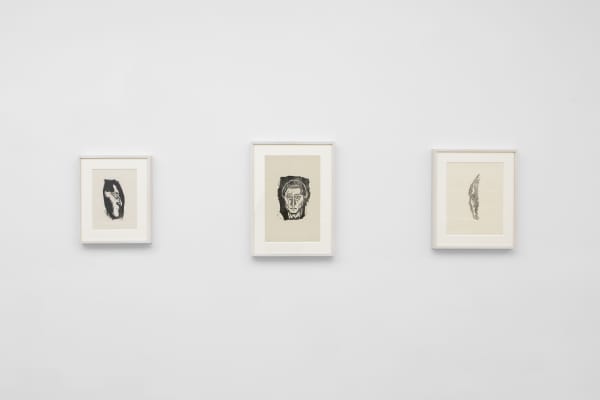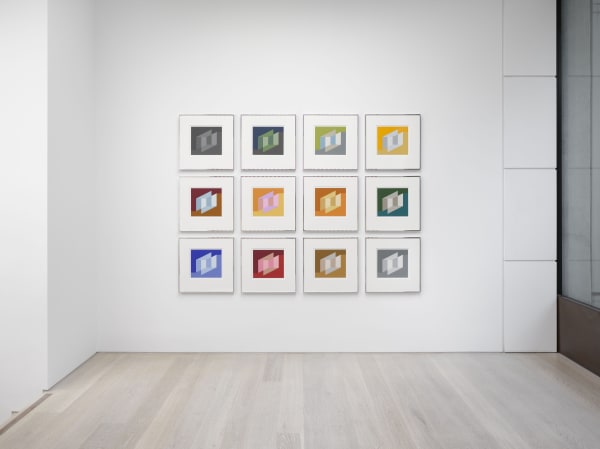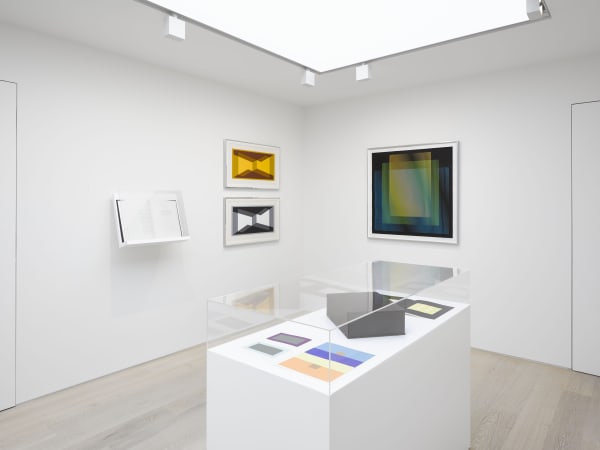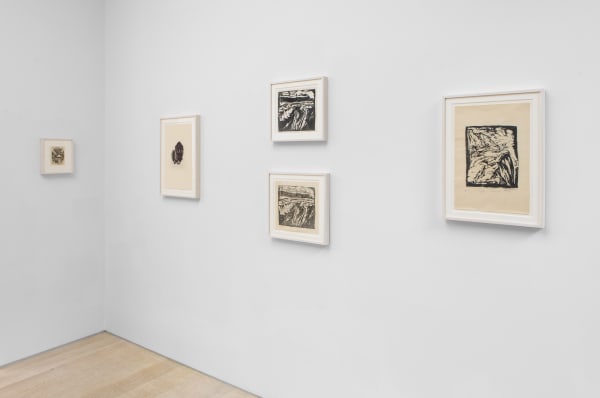Josef Albers
Josef Albers (1888 - 1976), born in Bottrop, Germany, was one of the most influential and innovative painters and printmakers of the twentieth century. Making use of numerous media, including etching, engraving, woodcut, lithography and screenprinting, Albers earliest prints were made whilst studying in Essen, Germany, from 1916 - 1919.
His early graphic works illustrate the development of the rigorous modernist aesthetic for which he became synonymous, as well as a fascination for the possibilities offered by the various techniques and materials of printmaking. From the 1940s onwards, his Homages to the Square came to dominate his art and teaching. This series presented the square as the ideal vehicle for his explorations into colour. Albers began his Squares in paint, but soon came to depend on print processes, particularly screenprinting, as it offered an evenness and clarity of colour unavailable in oil or acrylic. The medium of print liberated Albers, allowing him to transform the elements of line, colour and space in his work.
Albers studied briefly at the Königliche Bayerische Akademie der Bildenden Kunst, Munich, in 1919 before becoming a student at the Bauhaus in 1920. In 1922, Albers joined the school's faculty, first working in stained glass and a year later teaching design. By 1933, when pressure from the Nazis forced the school to close, Josef and Anni Albers emigrated to North Carolina, USA, where they founded the art department at Black Mountain College. In 1950 they moved to Connecticut, where Albers was invited to direct a newly formed department of design at Yale University School of Art.
During this time, Albers began to show his work extensively within the United States. In 1964 the International Council of Museum of Modern Art, New York, organised the exhibition Josef Albers: Homage to the Square, which opened in Caracas, Venezuela, and travelled to 22 venues in the United States and Latin America until 1967. With his wife, Anni, he frequently travelled to Mexico, visiting archaeological sites, studying the monumental constructions and amassing a large collection of sculptures and ceramics.
In 1971 Albers became the first living artist to be the subject of a solo exhibition at the Metropolitan Museum of Art, New York. Albers retired from teaching in 1958, just prior to the publication of his influential study, Interaction of Color (1963), which was reissued in two volumes in 2013.
More recent exhibitions include Kawamura Memorial DIC Museum of Art, Sakura (2023); Art Museum of the University of Memphis, Tennessee (2022); Josef Albers Museum Quadrat Bottrop (2022, 2019); Museo Villa dei Cedri, Bellinzona; Tucson Museum of Art, Arizona (2019); Peggy Guggenheim Collection, Venice (2018); Solomon R. Guggenheim Museum, New York (2018); and The Museum of Modern Art, New York (2016).
Josef Albers: Process and Printmaking, opened at Museo Fundación Juan March, Palma, in 2014 and travelled to Museo de Arte Abstracto Español, Cuenca, and the Josef Albers Museum Quadrat, Bottrop.
In 2022 The Josef and Anni Albers Foundation gifted fifty-seven works to the Musée d’Art Moderne de Paris, including twenty-two works by Albers. A series of dual retrospectives of Anni and Josef's work have been exhibited at The National Gallery, Canberra, Australia; Boghossian Foundation, Villa Empain, Brussels, Belgium (2024); The Kunstmuseum Den Haag, The Hague, Netherlands (2023); The Institut Valencià d'Art Modern, Valencia, Spain (2022); Musée d’Art Moderne de Paris; Paris (2021).
Josef Albers died aged 88 in 1976, in Connecticut, USA. Albers' pervasive influence, both as artist and teacher, continues today, and his work is housed in major collections all over the world.
Cristea Roberts Gallery is the exclusive worldwide representative for the prints from the Josef and Anni Albers Foundation.
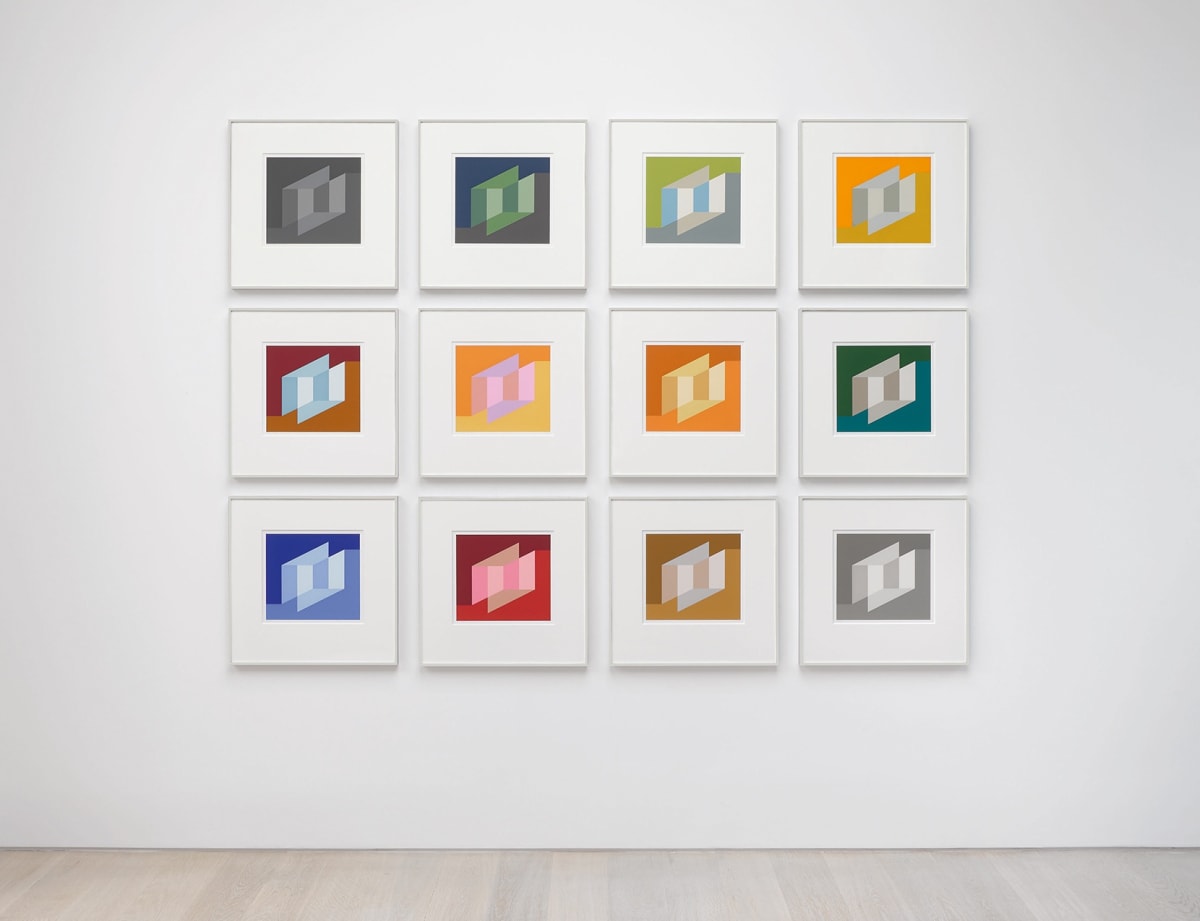
The Sum of the Parts: The Complete Portfolios of Josef Albers
Cristea Roberts Gallery is delighted to open the first exhibition dedicated solely to the complete print portfolios by Josef Albers made during the latter decades of his life, including his final body of work.
Selected works
For a complete list of available works by Josef Albers please contact sales@cristearoberts.com
News, Events & Museum Exhibitions
Selected Press
Josef Albers: Midnight and Noon

Josef Albers: Midnight and Noon
In 1964 Josef Albers made one of his most complex and important print portfolios, Midnight and Noon.
Produced in only an edition of 20 copies, examples of complete portfolios are incredibly rare to come to market.
Book

Josef Albers: Discovery and Invention: The Early Graphic Works
This hard-back publication considers Josef Albers’s early development as an artist, beginning with the pre-Bauhaus years when he worked as an elementary-school teacher. Alongside texts by recognised Albers scholars, the book presents dozens of prints, paintings, drawings and previously unseen photographs.
£ 27.00
Films
The Sum of the Parts: The Complete Portfolios of Josef Albers
Discovery and Invention: The Early Graphic Works of Josef Albers Exhibition Film
Installations
Exhibitions at Cristea Roberts Gallery
Josef Albers teaching at the School of the Art Institute of Chicago, 1959–60
Photo: Norman Boothby
© Norman Boothby
Courtesy of the Josef and Anni Albers Foundation

